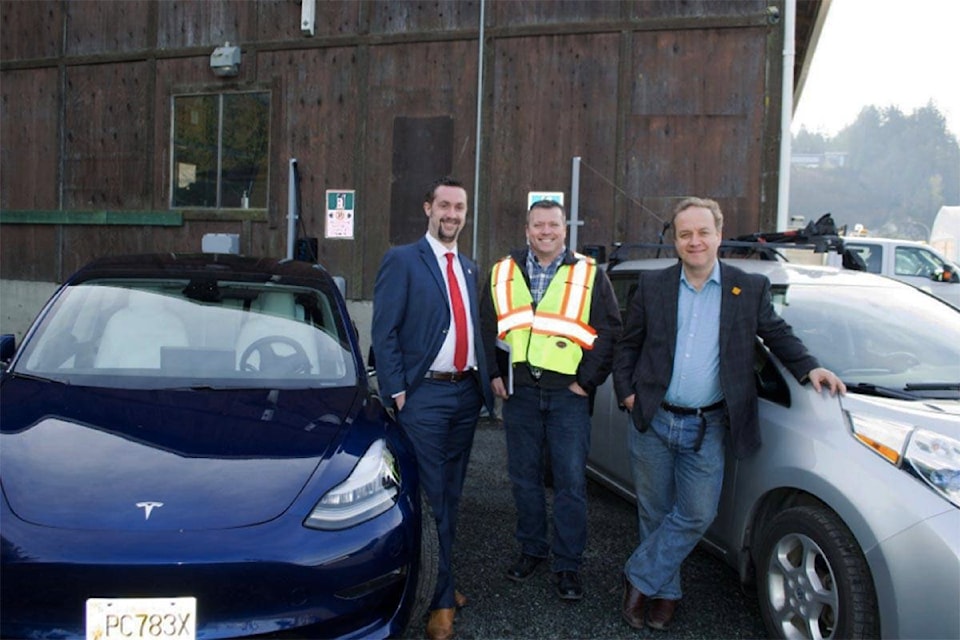The District of Central Saanich may be putting the cart before the horse with the installation of two new electric vehicle chargers, but Mayor Ryan Windsor says the new additions will help shift a much-needed change to green technology, into high gear.
Secured with a grant from Plug In BC – a program that lays the groundwork for electric vehicle infrastructure, supported by the province, industry, electric vehicle owners and NGO’s – the charging stations align with the Climate Leadership Plan the District implemented this year.
RELATED: Saanich drivers can plug into 30 charging stations for electric vehicles
As Windsor puts it: “You can talk a lot about climate change is a problem, but how are adapting our lifestyles, our work plans, the way we do business to a less carbon intensive approach and how do we transition?”
The District sees this as the first step in their goal to transition to an entirely electric fleet – something the mayor expects “some time in the next year or so.”
RELATED: B.C.’s subsidized electric vehicle sales gaining speed
While China looks to be at the forefront of technology to power electric vehicles – many of the zero emission buses BC Transit is currently testing are Chinese-made – Windsor points out the District, like many, will rely on North American automakers, particularly when it comes to pickup trucks.
“Historically a worker may have had a truck, but do they need a truck?” Windsor asks, suggesting the District will also assess the way it operates.
RELATED: B.C. electric vehicle subsidy fund drains faster than expected
Since many drivers of electric vehicles charge at home, Windsor says the District is also evaluating how to install more stations in both new and existing housing developments.
“It’s exciting,” says Windsor, who drives a Tesla. “I’m optimistic on the transition. I think the vast majority of vehicles sold by 2030 will be electric.”
Update Dec. 11, 2 p.m.: This story has been corrected from its original version that stated the chargers were for public use.
@kristyn_anthony
kristyn.anthony@blackpress.ca
Like us on Facebook and follow us on Twitter.
kristyn.anthony@blackpress.ca
